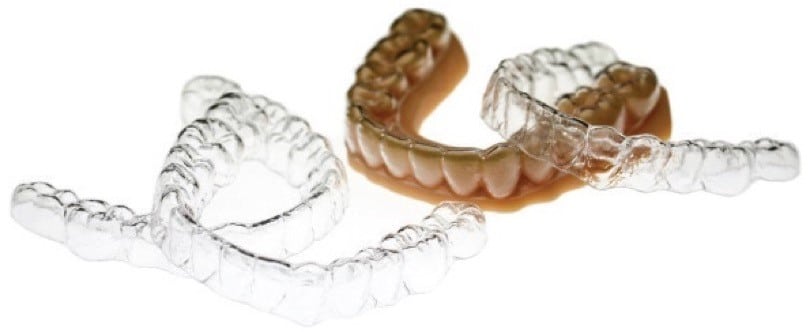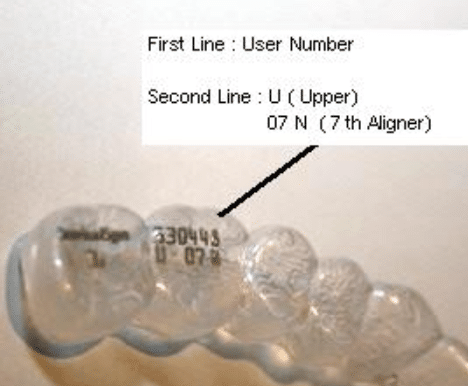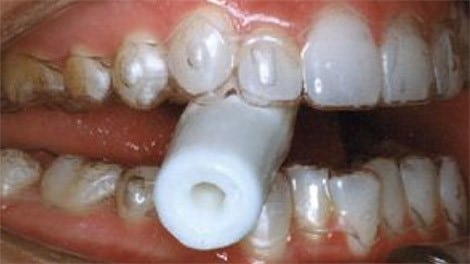Congratulations on your decision to pursue improved oral health with Invisalign®!
PLEASE READ ALL OF THESE INSTRUCTIONS.
UNDERSTANDING THIS INFORMATION WILL DETERMINE WHETHER YOU WILL HAVE A BEAUTIFUL SMILE & AN AMAZING EXPERIENCE, 😄
or a challenging experience with a less than ideal result. 😔
It will only take a few minutes to read and should answer any questions you may have.
If you have any questions after reading this information, please call us today at 561-363-0324 and our team members can answer any of your questions.
How and when to wear your aligners
- Invisalign® treatment ONLY works when you are wearing the aligners. Braces work well because they are GLUED to the teeth and are literally applying force to your teeth 24 hours a day in order to get them to move. You must act as if your Invisalign aligners are “glued” to your teeth as well! We recommend you wear your aligners FULL TIME, 22 hours a day, day and night. The only time the aligners should be out of your mouth is when you are eating and drinking, brushing and flossing or cleaning them.
- The ideal wear time is AT LEAST 22 HOURS A DAY. If you do not wear your aligners for AT LEAST 22 HOURS, THAT DAY DID NOT COUNT as a day of “wear” and you should wear that aligner an extra day in addition to the number of days you were instructed to wear each tray.
- At each visit, Dr. McCaffrey will instruct you in the number of days to wear each aligner. Most often, you will wear each aligner for seven days before switching to the next aligner. Even though it may seem that the current aligner is loose and no longer moving your teeth, it may take longer for the roots to catch up with the crown of the tooth.
- If you miss a single day of wearing the aligner for any reason, wear the aligners for an additional day.
- If your teeth are not moving as anticipated at any point in your treatment, Dr. McCaffrey may instruct you to wear each aligner for more than seven days, but unless otherwise instructed, always wear each for seven days. We are assuming you will be an excellent patient and wear the aligners the required 22 hours per day.
Insertion and Removal
- Make sure you have the proper aligner. Each aligner bag is labeled with the aligner number but there is also a very small number on the top corner of every Invisalign aligner. U is marked on the upper aligner and L is marked on the lower aligner, and the number of the aligner is listed on both. This can help if you ever get the aligners out of order and they are no longer in their labeled bag. Always keep the aligners that you are wearing that week in your hard, plastic case, and any other aligners in their correct numbered bag.
- When inserting, gently push the aligners over your front teeth. Then, apply pressure to the tops of the left and right molars until they snap into place. DO NOT bite your aligners into place.
- Make sure each aligner comes ALL THE WAY DOWN and is fully seated. You should not see any space between the edge of the tooth and the edge of the aligner. If the aligner is not fully in place, the teeth will not move properly, and the next aligner will be even further off track. This can waste many weeks of treatment and may even require restarting treatment.
- To remove the aligners, pull them off with equal pressure on both sides of the back teeth first, and then gently lift off the front teeth. Always rinse the aligners in cold water and store in the hard, plastic case. To prevent damage, avoid unnecessary removal. Do NOT use sharp objects to remove your aligners.
- When switching to the next aligner (for example, from number 1 to number 2), it is VERY important to wear aligner 1 all day long, eat dinner, put aligner 1 back in your mouth, then right before bed, take out 1, brush your teeth, and place in number 2.
Do not eat dinner, leave aligner 1 out for three to four hours and then switch to aligner 2, as that will result in losing control of the teeth. The ONLY way to properly switch aligners is to take out one aligner and IMMEDIATELY after brushing, insert the next aligner.
Storing Aligners
- Always place the aligners in the cases provided. Never place aligners in napkins where they may be thrown in the trash. Never place aligners in a pocket that can be sat on.
- NEVER discard old aligners, place them back in their numbered bag after you have worn them. Always bring your current aligner to your orthodontic visit.
Lost Aligners
- If you lose a single aligner, go to the next aligner and make up all of the missed days in addition to the normal wear time. For example, if you are instructed to wear your aligners seven days each, and you lose an aligner after two days, you should wear the next aligner for the five days you missed, plus the next seven days of normal wear time.
- Try your very best to keep track of your aligners so that each aligner can be worn exactly seven days.
- If you lose two sets of trays in less than a week, please call our office.
Care of Aligners
- Clean your aligners prior to each insertion. Rinse under cool running water and brush gently until clean.
- Never use denture cleaner or soak in alcohol or bleach, as they will be damaged.
- Do not place aligners in boiling or hot water to clean, as they will be damaged.
- Use a fluoride toothpaste at night. Brush for two minutes, spit out the excess toothpaste in your mouth and then immediately put on your aligners (do not rinse your mouth with water, a small amount of toothpaste should still be on your teeth when you insert your trays after brushing).
- Brush the inside of the aligners carefully after every meal. Aligners should be crystal clear at all times. If aligners are cloudy, this is an indication of plaque accumulation, which can be extremely damaging to the teeth and can lead to scarring, decalcification and cavities.
Other Questions
- Oral Hygiene
- Brush and floss normally with the aligners out. Try to brush after eating and before re-inserting aligners. Large food particles may prevent proper insertion or lead to cavities.
- Eating
- There are no food restrictions with Invisalign. However, aligners must ALWAYS be removed when eating.
- Drinking
- Except for cold or room temperature water, always remove aligners while drinking anything. Any fluid will get inside the aligner and be held against your teeth for hours, which can cause staining or may damage the teeth and aligners.
- Chewing Gum
- Do NOT chew gum while wearing aligners.
- Smoking
- It is advised NOT to smoke while wearing the aligners. It will stain the aligners and teeth.
- If you have any trouble with your treatment, please call the office.
- If you notice one of your attachments comes off one of your teeth, please call the office and let us know so we can order a new template/tray to reattach the missing attachment at your next visit.
General Soreness and Speech
Most people experience some soreness for a day or two after starting each new set of aligners. This is normal. It is a sign that the aligners are working and moving your teeth to their final destination. On rare occasions, aligners may temporarily affect your speech to a slight degree. However, as your tongue gets used to having the aligners in the mouth, any minor disturbance in normal speech caused by the aligners will disappear within the first week. Most people have no problems with their speech at all. If you notice any rough areas that bother your tongue or cheeks, use an emery board or nail file to smooth them out.
Proper Aligner Fit During Treatment
- During treatment, it is important that the aligners fit INTIMATELY and CLOSELY to each tooth. There should never be a visible gap between the tooth and the aligner. If there is a visible gap, that means the tooth is not “tracking” or moving appropriately with the aligner. This is usually due to not wearing the aligner for the minimum time of 22 hours a day for a full week each. See photo below.
- If a tooth is not fitting with the aligner, that indicates that you should not proceed to the next aligner without first consulting Dr. McCaffrey.
- At times, if one tooth is stubborn and not tracking, Dr. McCaffrey will provide a cylindrical piece of rubber called a “chewy” for you to CHEW on. The rubber is used to bite on to push the aligner all the way onto the teeth when you first insert the aligners. Also, the chewy should be used in an exercise called CHEWING where you bite FIRMLY for three seconds on the stubborn tooth, and then release for three seconds, then bite for three seconds and then release for three seconds. This should be done for 10-20 minutes twice a day to cause stubborn teeth to WAKE UP and better fit the aligner.





